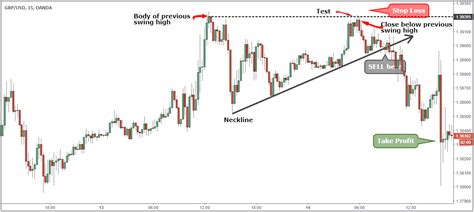Outsmart the Market: PMdarima Backtesting Strategies
The financial markets are a complex beast, constantly shifting and evolving. Successfully navigating this landscape requires sophisticated tools and a deep understanding of market dynamics. One powerful tool gaining traction among quantitative traders is PMdarima, a Python library for time series analysis and forecasting. This article delves into how PMdarima can be leveraged for robust backtesting strategies, allowing you to outsmart the market and potentially improve your investment returns. We will explore various techniques, common pitfalls, and best practices to help you refine your approach.
What is PMdarima and Why is it Useful for Backtesting?
PMdarima is a Python package built on top of the statsmodels library, offering a streamlined and user-friendly interface for fitting and using autoregressive integrated moving average (ARIMA) models and seasonal ARIMA (SARIMA) models. These models are particularly well-suited for time series data, a cornerstone of financial markets analysis. Its strength lies in its ability to automatically select the optimal parameters for these models, minimizing manual intervention and potential bias. This automation is crucial for rigorous backtesting, where numerous simulations are often needed.
The use of PMdarima for backtesting offers several key advantages:
- Automation: Automating parameter selection reduces human error and improves consistency.
- Efficiency: PMdarima's optimized algorithms lead to faster model fitting and forecasting.
- Flexibility: It supports a wide range of ARIMA models, allowing you to tailor your strategy to various market conditions.
- Robustness: Its rigorous statistical foundation enhances the reliability of backtesting results.
Common PMdarima Backtesting Strategies
Several strategies can be employed when using PMdarima for backtesting. The choice depends heavily on your trading style and risk tolerance:
1. Simple Moving Average Crossover Strategy with ARIMA Forecasting:
This strategy combines the simplicity of moving average crossovers with the predictive power of ARIMA models. We use PMdarima to forecast future price movements, triggering buy signals when the short-term moving average crosses above the long-term moving average and confirming the signal with a positive ARIMA forecast. Conversely, sell signals are generated when the short-term average crosses below the long-term average, and the ARIMA forecast is negative.
2. Mean Reversion Strategy with SARIMA Modeling:
Mean reversion strategies assume that asset prices tend to revert to their historical averages. Here, SARIMA models, capable of capturing seasonal patterns, are used to predict when an asset price is significantly deviating from its mean and is likely to correct. Buy signals are generated when the price falls below a certain threshold, and the SARIMA model forecasts an upward trend. Sell signals are generated in the opposite scenario.
3. Volatility-Based Trading with GARCH and ARIMA:
This sophisticated approach integrates Generalized Autoregressive Conditional Heteroskedasticity (GARCH) models, which capture volatility clusters, with ARIMA models for price forecasting. By analyzing volatility forecasts, traders can adjust their position sizing or enter/exit trades based on risk appetite. High volatility periods might lead to reduced position sizes or even exiting trades entirely.
Addressing Potential Pitfalls in PMdarima Backtesting
While powerful, PMdarima backtesting isn't without its challenges:
Overfitting: Selecting too complex an ARIMA model can lead to overfitting, where the model performs exceptionally well on historical data but poorly on unseen data. Careful model selection and validation are essential. Techniques like cross-validation can help mitigate this risk.
Data Quality: The accuracy of backtesting relies heavily on the quality of the input data. Inaccurate or incomplete data will lead to flawed results. Thorough data cleaning and validation are paramount.
Transaction Costs: Backtesting often neglects transaction costs (brokerage fees, slippage). Incorporating these costs into your simulations provides a more realistic representation of potential profits.
Parameter Optimization: While PMdarima automates parameter selection, you should still explore different model orders and settings to find the optimal configuration for your specific strategy and dataset.
How to Improve Your PMdarima Backtesting
- Robust Validation: Employ techniques like walk-forward analysis and out-of-sample testing to ensure the model generalizes well to new data.
- Monte Carlo Simulations: Run multiple simulations with varying parameters and random noise to assess the robustness of your strategy.
- Stress Testing: Test your strategy under various market conditions (bull, bear, sideways) to identify its limitations.
- Incorporate Risk Management: Integrate stop-loss orders and position sizing rules into your backtesting to manage risk effectively.
Frequently Asked Questions (FAQ)
Q: Can PMdarima be used for all asset classes?
A: While PMdarima can be applied to various asset classes (stocks, bonds, currencies, etc.), its effectiveness depends on the specific characteristics of the asset’s price time series. For highly volatile assets, more sophisticated models might be necessary.
Q: How do I choose the appropriate ARIMA order for my model?
A: PMdarima's automatic ARIMA order selection simplifies this process. However, you might still experiment with different order combinations to fine-tune your results. Analyzing autocorrelation and partial autocorrelation plots can also guide your choice.
Q: What are the limitations of using PMdarima for backtesting?
A: Backtesting inherently relies on historical data, which may not perfectly reflect future market behavior. Additionally, unforeseen events can significantly impact the performance of any trading strategy.
By carefully considering these factors and employing the strategies outlined above, you can leverage PMdarima's capabilities to develop more robust and profitable backtesting systems, allowing you to outsmart the market and refine your investment decisions. Remember that backtesting is a tool for improving your understanding of a strategy; it does not guarantee future success. Always trade with caution and manage your risk effectively.

